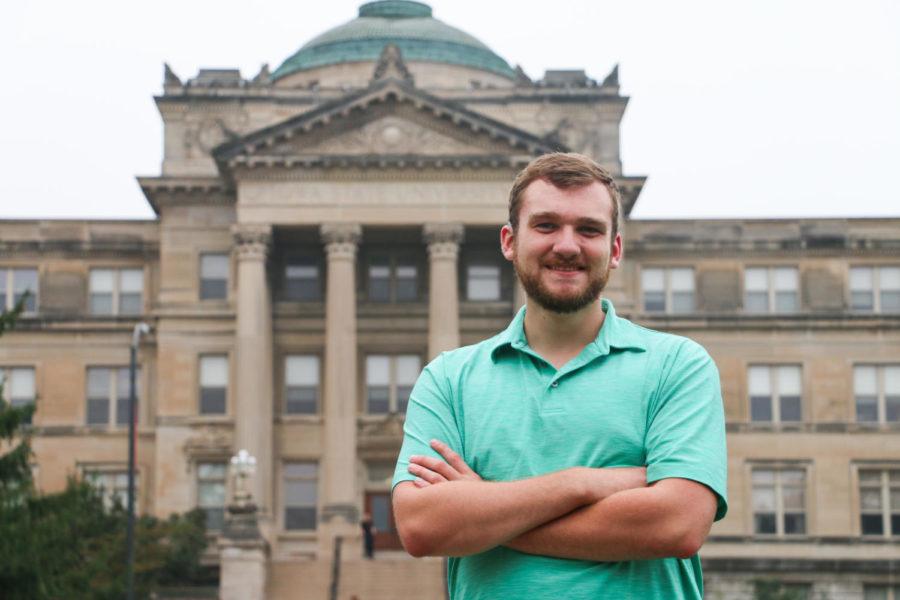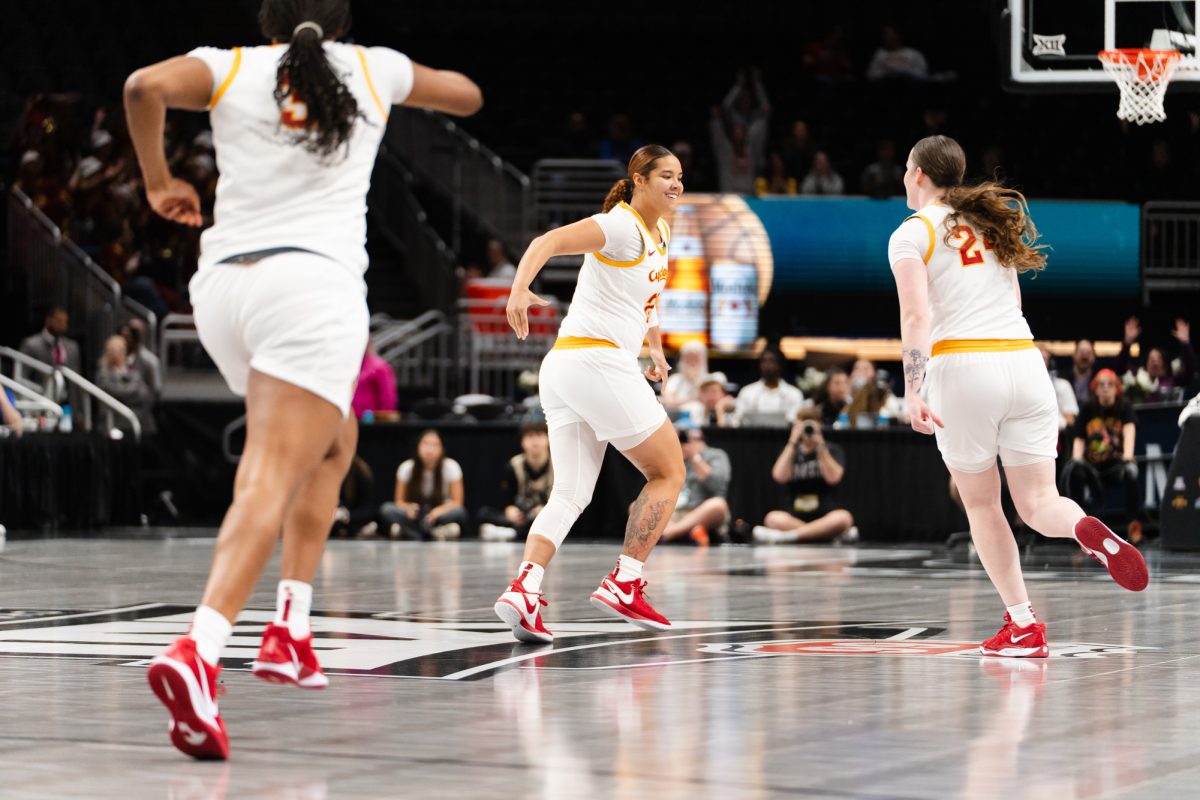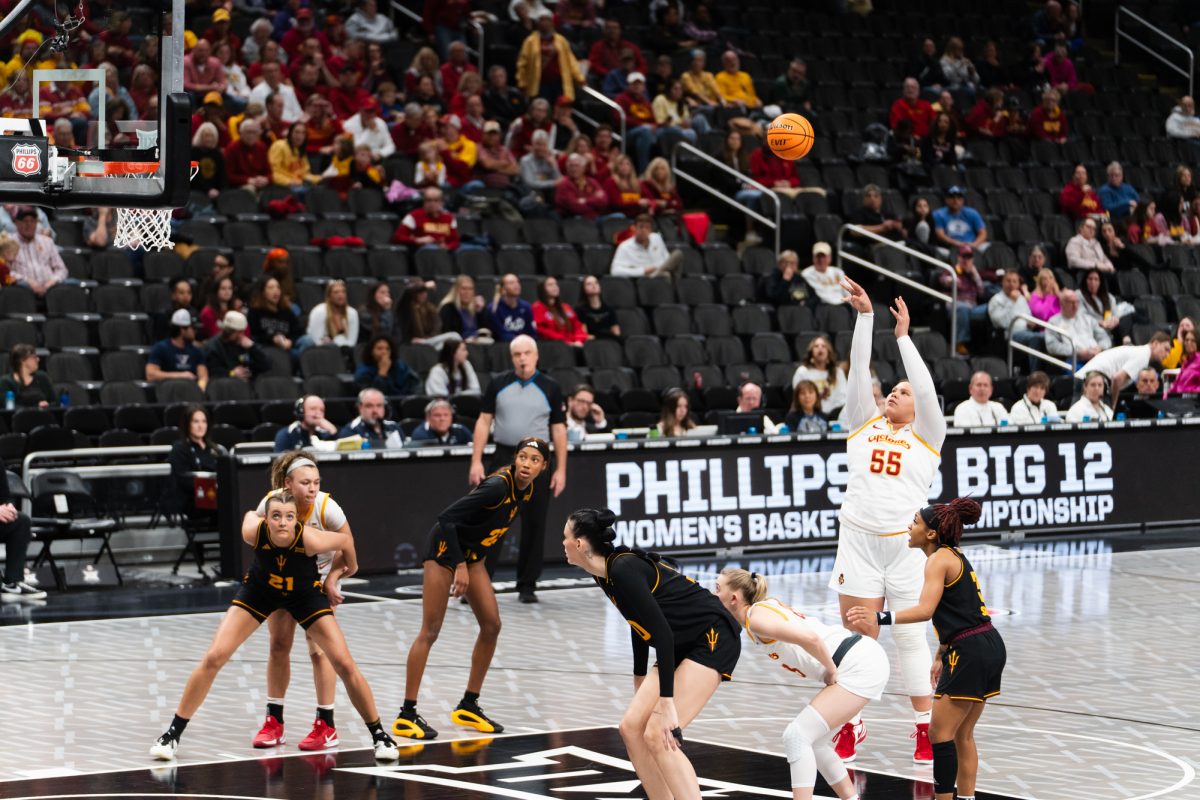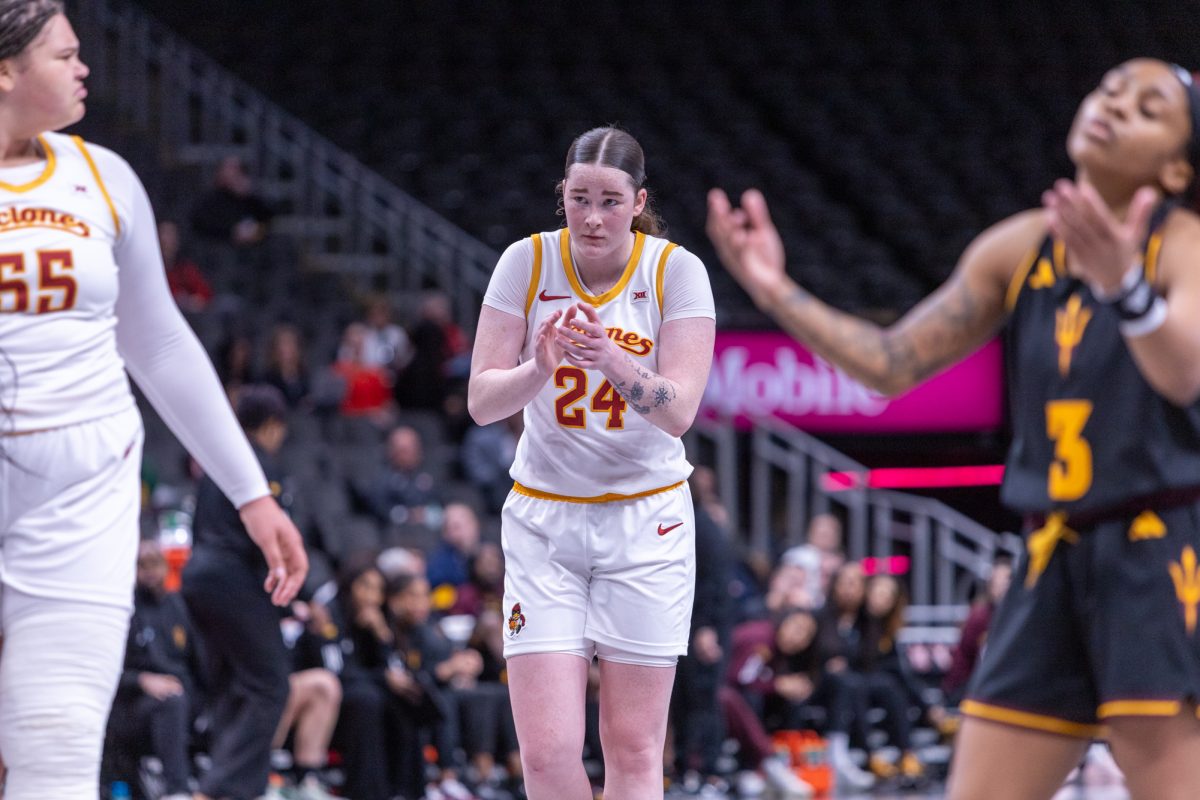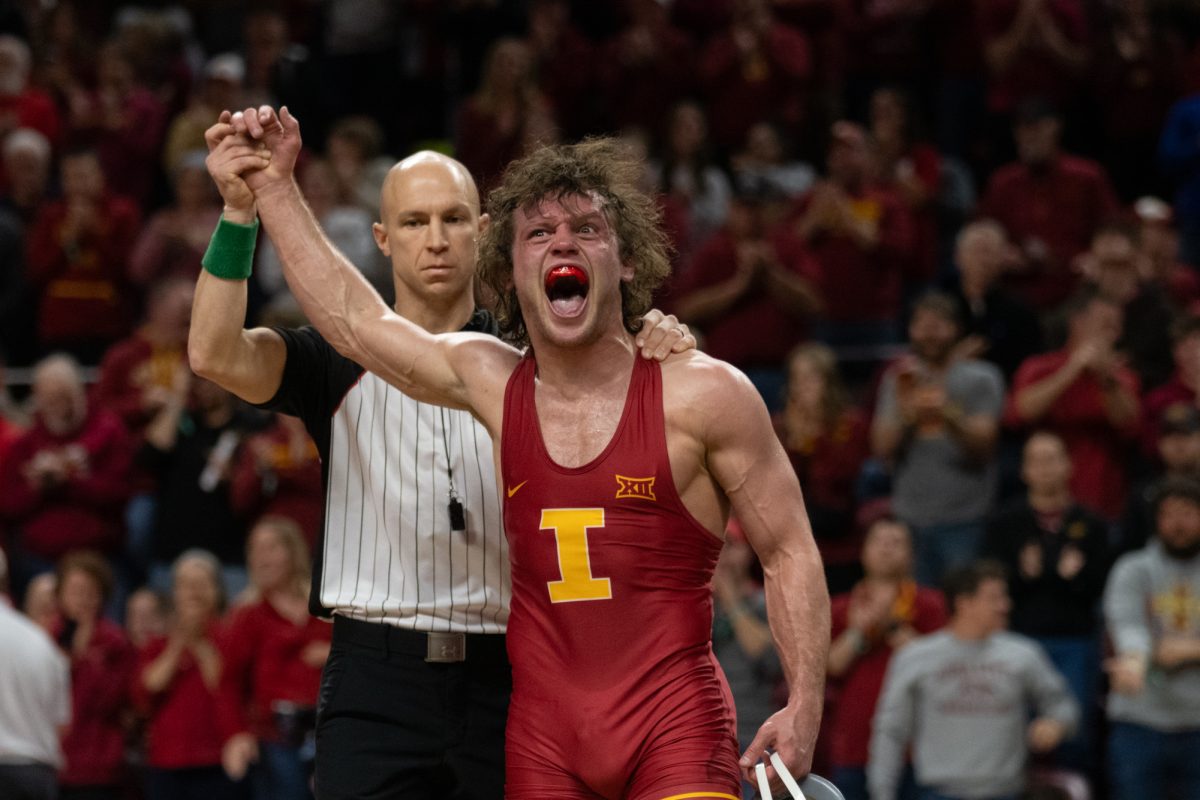Embracing Deaf: StuGov member discusses ins and outs of identity
October 15, 2017
Kody Olson was born hearing.
However — when he was just two years old — an incident at daycare would inadvertently alter his way of life.
Olson doesn’t remember specifics, but knows this for a fact: He was bitten by a kid at daycare and contracted bacterial meningitis — a spinal cord infection — as a result.
This led to nearly 48 hours of vomiting and a misdiagnosis of strep throat by the county hospital.
He was then referred to the hospital at the University of Iowa where they properly diagnosed him with the bacterial infection. And it was only some time later after a bedtime story from his aunt, and a lack of response on Olson’s part, that his family came to the realization: Kody was Deaf.
“To have only lost my hearing is pretty fortunate because I could have lost my ability to walk, or just a wide range of things,” Olson said. “To only lose my hearing was probably a good outcome.”
Olson was then implanted with a cochlear implant in his right ear — a decision his parents had to come to pretty quickly. A cochlear implant is an electronic medical device that replaces the function of a damaged inner ear.
By the time the first surgery was done, Olson said, his left cochlea was so thick it couldn’t be penetrated as his cartilage had turned to bone, leaving no choice but to only have one implant.
“And that is how I became Deaf,” Olson said.
GROWING UP DEAF
Olson, who is currently a senior in global resource systems, grew up in Keswick, Iowa. Population: 240.
“It’s a very small town and a very small community,” Olson said. “Growing up Deaf in an elementary school where you have a graduating class of 25 is really unique.
“What was so unique about it was — and not many deaf people have this experience — is from kindergarten all the way until my eleventh grade in high school, I had the same interpreter.”
Misty DeWitt, Olson’s interpreter, was kind of like a second mom, he said. The two would go on FFA trips together and eat dinner with each other’s families, in addition to being with each other from 8 a.m. to 3 p.m. every weekday.
What was even more unique for Olson was that his class learned sign language, as well.
“We all learned sign language together,” Olson said. “Everyone in my class knew basic sign language, so it was a really cool experience to grow up in such a supportive community.”
But the transition to Iowa State — which boasts a population of more than 36,000 students — wasn’t exactly easy.
“My whole freshman year was all about learning about my Deaf identity,” Olson said. “The disability of being Deaf is so much more than not being able to hear. There is culture behind it, there is an entire language behind it.”
The fact that Deaf people have their own jokes, social norms, art and culture, Olson said, was something he had never considered before he came to Iowa State.
This is exemplified through Olson’s unique experience — instead of having one interpreter that he grew up with, he now has four to six.
“You talk to Megan [Johnson] and she’ll say my freshman year I was kind of rejecting of those interpreters. It was hard to embrace that new identity,” Olson said.
CHANGE AGENT: INCLUSIVE DESIGN
This misperception of being Deaf transitions into other aspects of Olson’s life, too.
The first conversation Olson really had with Johnson, who serves as Iowa State’s only sign language interpreter, was when he ran into issues freshman year with Cyclone Cinema.
“I wanted them to put closed captions on and they fought me the whole way,” Olson said. “They wanted me to submit a request five days before the movie. It was the first time I recognized I was faced with a barrier.”
So he told Johnson about the experience and she said she would help.
“We started working together to meet with the different people such as the Dean of Students Office and we just kind of bonded while we were trying to make it a better place for the community,” Olson said.
Now, all films played on Sundays are guaranteed to be open caption and all other screenings can be open caption when a request is made.
For Olson, seeing change at this level sparked his interest in inclusive design.
“The idea of inclusive design is where you build an environment designed for students with disabilities but it happens to include all kinds of different people,” Olson said.
By building an environment that is adaptive and can fit the needs of the people, Olson believes should be the guiding principles in building a community.
“After Cyclone Cinema, I talked to some of my friends that didn’t speak English as their first language and they used closed captions and it helps them tremendously to help bridge that gap,” Olson said.
LEADERSHIP ON CAMPUS
Olson currently serves at the senior director of governmental affairs for Student Government. In this position, he lobbies for student issues at a campus, city and state level.
This year — at a state level — Olson’s legislative agenda includes addressing college affordability, student well-being and student inclusion. At a city level, Olson hopes to address tenant and landlord relations, campus and community relations, and community safety.
Outside of Student Government, Olson has interned for the White House, the U.S. Department of Agriculture, among other things.
‘SO, HOW DO YOU HEAR?’
Olson’s cochlear implant, which he self-describes as his “ear,” receives sound from an external microphone which is then transmitted to an internal component inside his skull to be converted into electrical impulses. The impulses are then sent to the auditory nerve to be deciphered.
He can’t hear at all when it’s removed, so when he showers, sleeps and swims, he has to rely on other senses to understand what’s going on in the world.
Olson only hears about 40 percent of what’s said in any given conversation even with his cochlear implant, so he reads lips, analyzes body cues and anticipates what a person will say to make sense of a situation.
“It’s actually very exhausting to be a Deaf person, it’s very mentally exhausting,” he said.
‘YOU TALK SO WELL FOR A DEAF PERSON’
Olson doesn’t see being Deaf as a disability, and doesn’t want others to see it that way either.
“When you talk about deafness, you talk about treating it, you don’t treat it as a problem, you treat it as a different culture,” Olson said. “I don’t have a problem being Deaf and almost everyone that I know who is Deaf does not have a problem with being Deaf they just need a different way to access content… whether that’s through sign language or closed captioning.”
And, quite frankly, he doesn’t want to hear compliments on “how well he speaks,” as it’s also not necessary to slow down and over-enunciate when speaking to him.
“People perceive people with disabilities operating on a different cognitive level. They assume they have so many sensory deprivations.”
Editor’s note: The word “Deaf” is capitalized in this story because Olson identifies as being culturally Deaf and has learned to embrace his Deaf identity. Read an earlier story on the difference between “deaf” and “Deaf” here.


